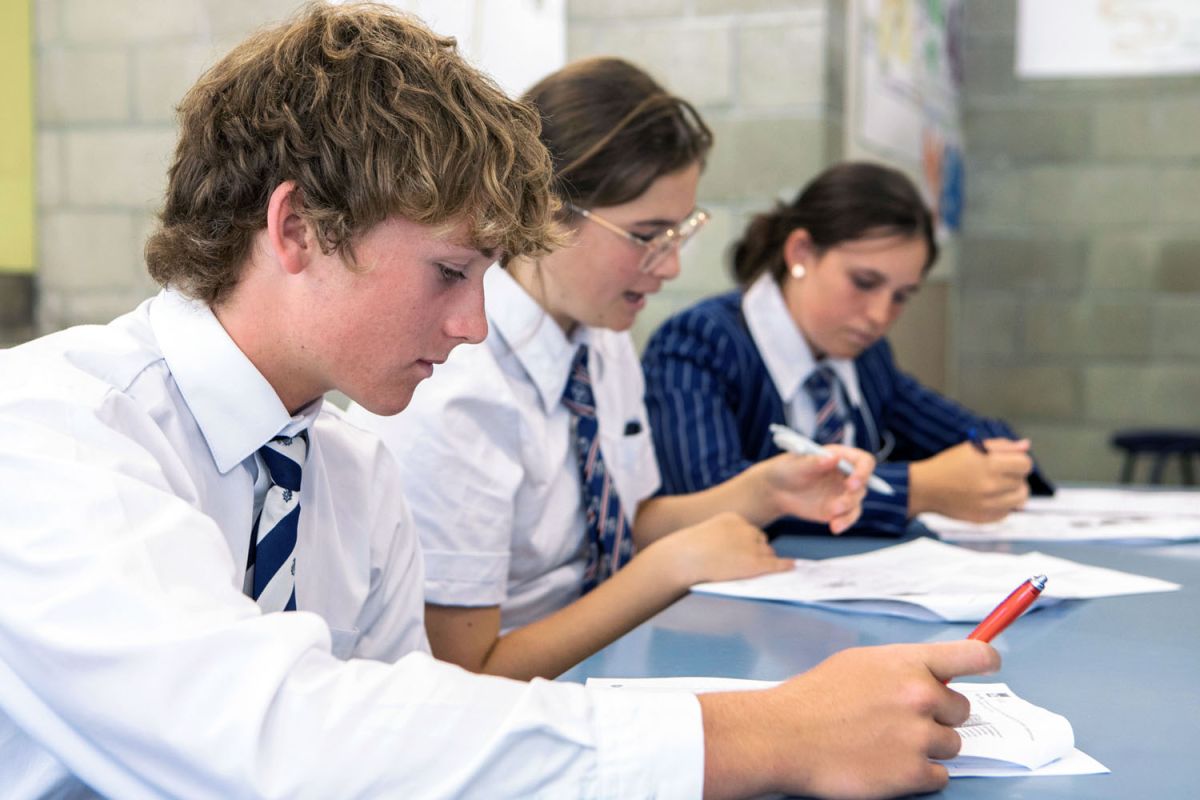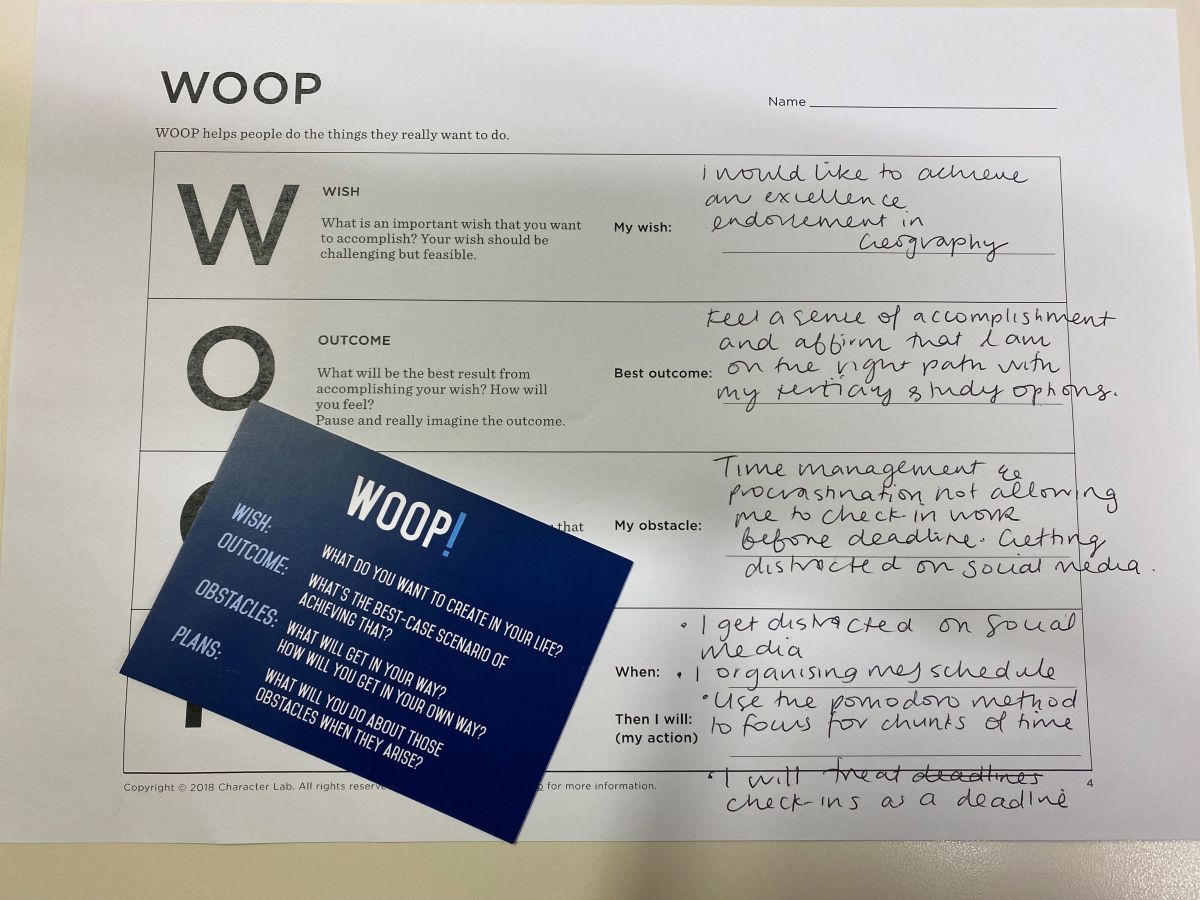Goal Setting Using WOOP Framework
26 July 2022
Written by Head of Well-being, Kerry Larby
An important aspect of human flourishing is to be found in the pursuit of our goals. We feel something intrinsically rewarding when we make progress in life. In light of this, accomplishment is one of the key pillars in PERMA-V, our model for well-being.
Teachers often ask questions querying how we make our young people more motivated, self-regulated and agentic? How do we create an environment where students set motivating goals and take action to achieve them? How do we build resilience?
At St Andrew’s, we carefully follow research to find out the answers to these questions.
What does the research tell us?
Psychologist, Gabriele Oettingen from New York University has dedicated over 20 years to researching human motivation. In this time, she has discovered why conventional wisdom around goal-setting falls short. Through her research, Oettingen has designed an evidence-based goal setting framework, called WOOP.
WOOP is unique to other goal setting techniques in that it includes a self-regulation strategy called mental contrasting. Mental contrasting encourages people to balance positively thinking about a desired future alongside consideration for the present day obstacles that may be in the way. Leading educationalist, Angela Duckworth, has proven the impact WOOP has on building character in young people, especially for building self-control.

How does WOOP work?
WOOP is an acronym standing for Wish, Outcome, Obstacle and Plan. Students move through each stage of the framework when setting an academic or well-being goal.

Wish
What is the specific, realistic yet challenging goal you would like to achieve?
(Traditionally this is what a goal setting method would include – the wishful thinking aspect)
Outcome
This stage focuses on thinking about why you would like to achieve the goal. It connects to the emotional aspect of motivation.
Why do you want to achieve your goal? What will be the best result from achieving your goal? How will you feel?
Obstacle
This is where the student bridges the gap between intention and action. In this stage, we focus on the internal obstacles that stand in the way of a person achieving their goal.
What are the main obstacles inside of you that may prevent you from meeting your wish?
Plan
The final stage, this is when the student considers the obstacles and makes a realistic plan.
What is your plan? What are effective actions you can take to tackle the obstacle? If this happens, then what will you do?
Oettingen and Duckworth emphasise that when striving towards a goal a resilient person would continually think through this process many times refining their plans.

How are we putting WOOP into action?
All Secondary School teachers at St Andrew’s are learning about the WOOP framework and have applied a WOOP goal in their own life. Teachers have recognised the application of this tool in different contexts such as academic goal-setting, focusing on well-being and setting goals in sport. Following through on this, Mr Tuu’u and Mr Ruge have set a task where each student sets an academic and well-being related WOOP goal supported by their tutor. It is also important for parents to support their children through the process.
Teachers at St Andrew's know about the science of goal setting and understand that people who achieve their goals:
Know where they want to go.
Develop alternative pathways to achieve their goals (I know how to get there. I am persistent and I think flexibly. I tolerate disappointment, expect challenges and try new paths again and again).
Have agency – they believe in themselves (I can do this!).
Do you set goals in your own life? Have you considered an evidence-based framework like WOOP? When your child says they would like to achieve something, could you lead them through questions like the ones suggested in the WOOP framework?
Related Posts


